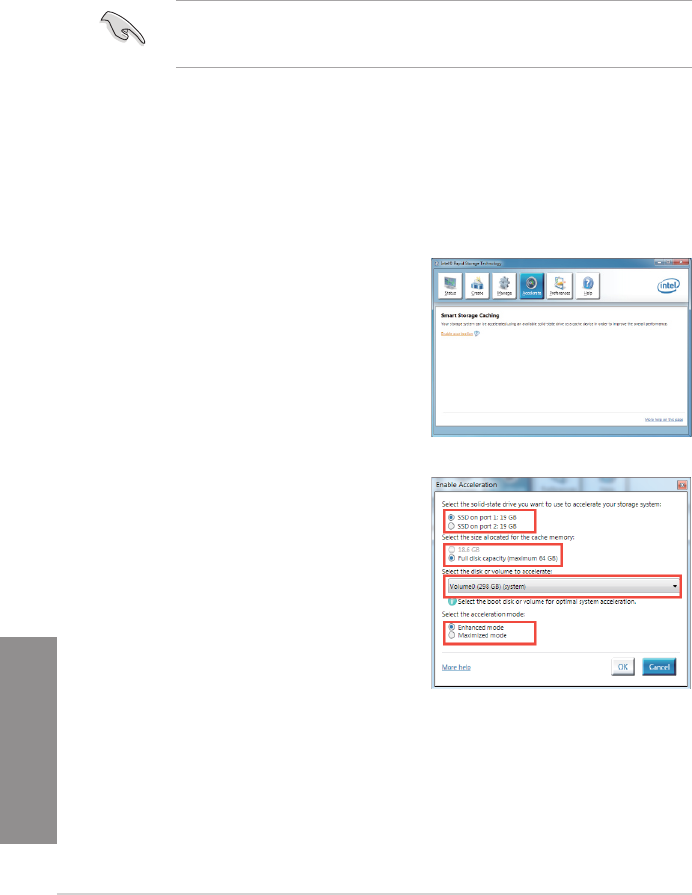user manual
Table Of Contents
- Safety information
- About this guide
- P8H77-V specifications summary
- Chapter 1: Product introduction
- Chapter 2: Hardware information
- 2.1 Before you proceed
- 2.2 Motherboard overview
- 2.3 Building your computer system
- 2.3.1 Additional tools and components to build a PC system
- 2.3.2 CPU installation
- 2.3.3 CPU heatsink and fan assembly installation
- 2.3.4 DIMM installation
- 2.3.5 Motherboard installation
- 2.3.6 ATX Power connection
- 2.3.7 SATA device connection
- 2.3.8 Front I/O Connector
- 2.3.9 Expension Card installation
- 2.3.10 Rear panel connection
- 2.3.11 Audio I/O connections
- 2.4 Starting up for the first time
- 2.5 Turning off the computer
- Chapter 3: BIOS setup
- Chapter 4: Software support
- Chapter 5: Multiple GPU technology support
- Appendices
- http://csr.asus.com/english/Takeback.htm

4-24
Chapter 4: Software support
Chapter 4
Intel
®
Smart Response Technology
Intel
®
Smart Response Technology boosts overall system performance. It uses an installed
fast SSD (min. 20GB available) as a cache for frequently accessed operations, speeding up
hard drive/main memory interaction. Key benets are expedited hard drive speeds, reduced
load and wait times, and maximized storage utilization. Power consumption also goes down
by reducing unnecessary hard drive spin.
Before applying Intel
®
Smart Response Technology, setting the SATA Mode BIOS item to
[RAID mode] in BIOS setup is necessary. Refer to section 3.5.3 SATA Conguration for
details
Installing Intel
®
Smart Response Technology
Place the support DVD to the optical drive. The Drivers installation tab appears if your
computer has enabled the Autorun feature.
Click the Drivers tab, then click Intel
®
Rapid Storage Technology Driver software.
Follow the onscreen instructions to complete the installation.
Using the Intel
®
Smart Response Technology
Click Accelerate to launch Smart
Response Technology settings.
a. Select the SSD you want to use to
accelerate your storage system.
b. Select the size allocated for SSD
caching.
c. Select which HDD for caching.
d. Enhanced mode: WRITE THROUGH,
write to SSD and HDD at the same
time.
Maximized mode: WRITE BACK, write
to SSD and write back to HDD in a later
time.
1.
2.
3.
1.
2.










